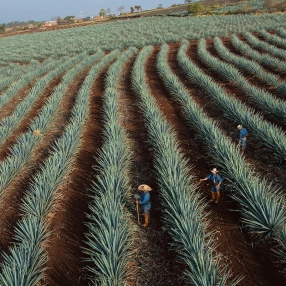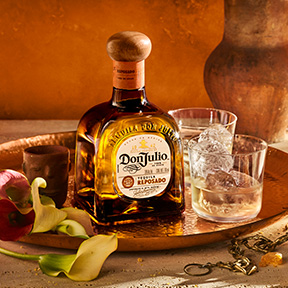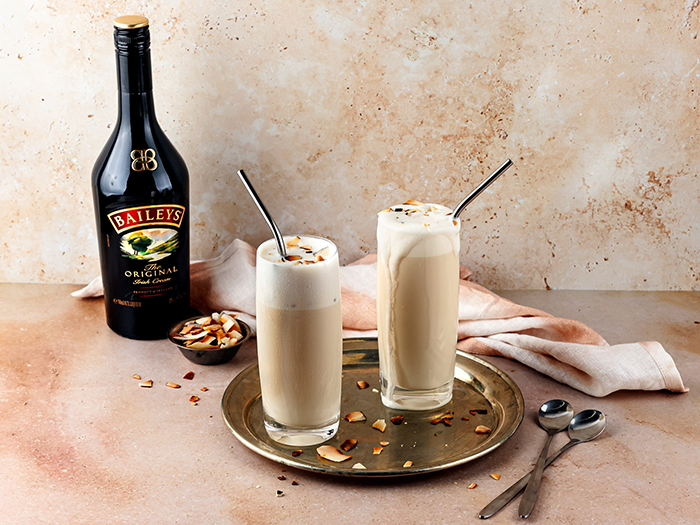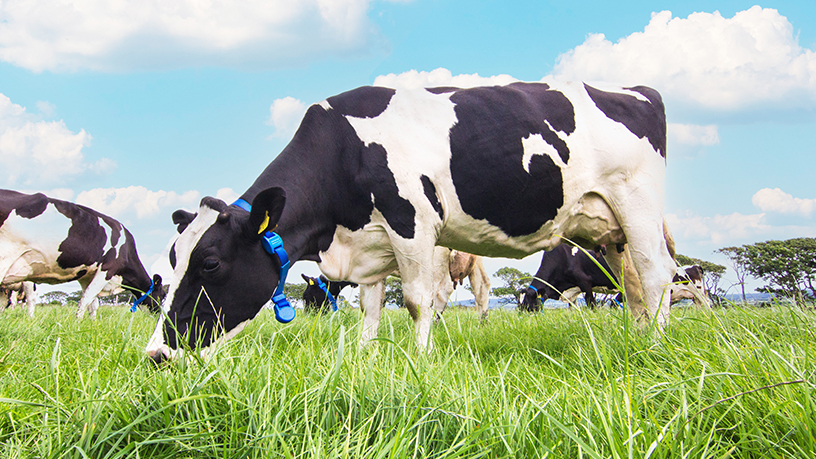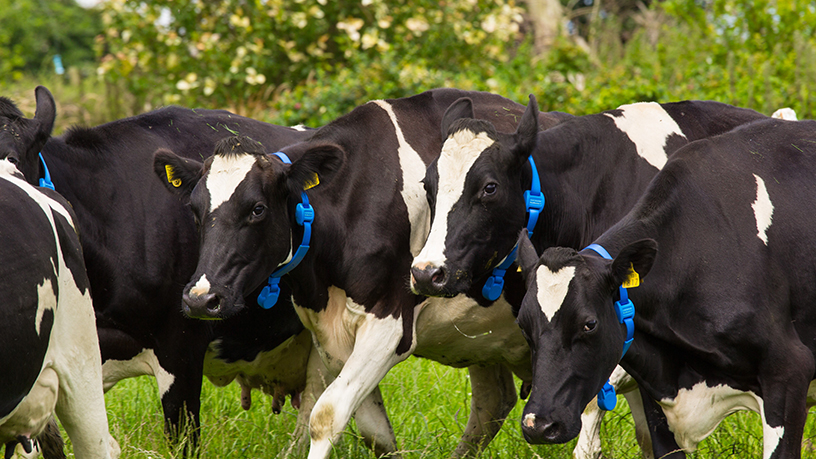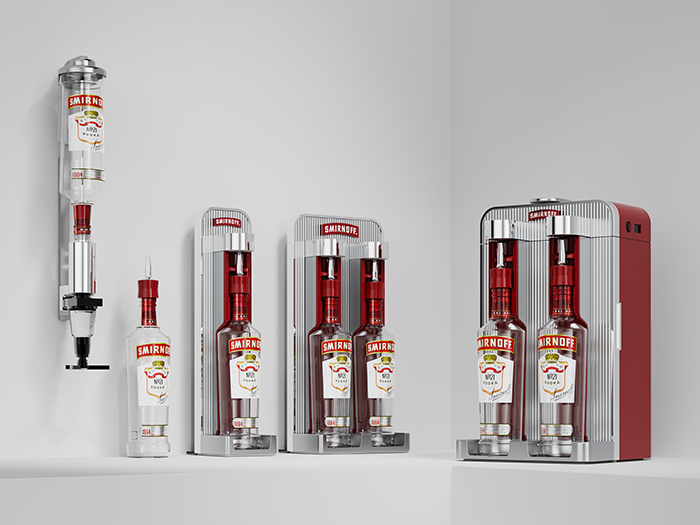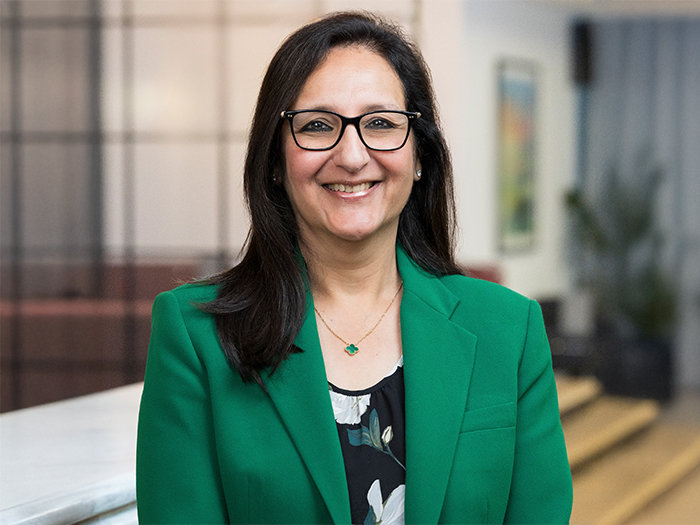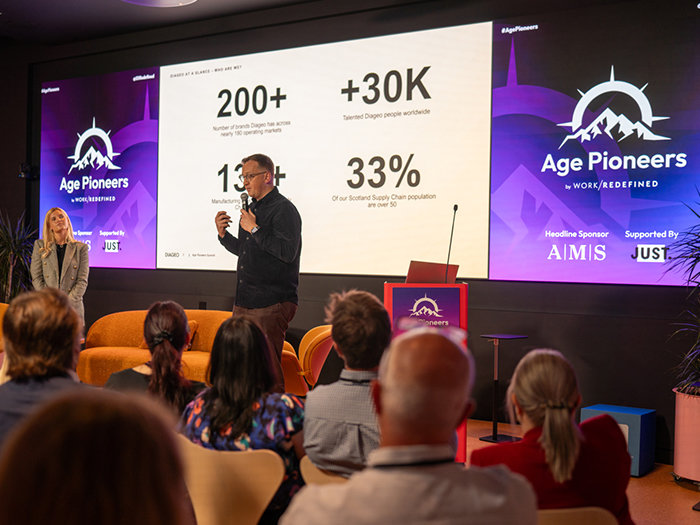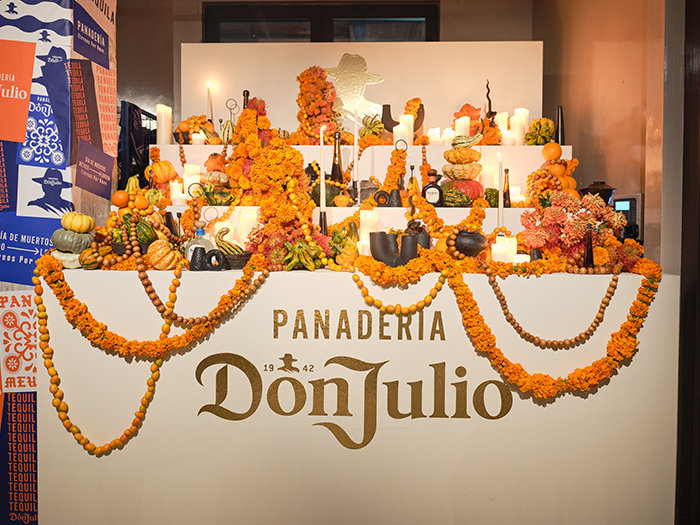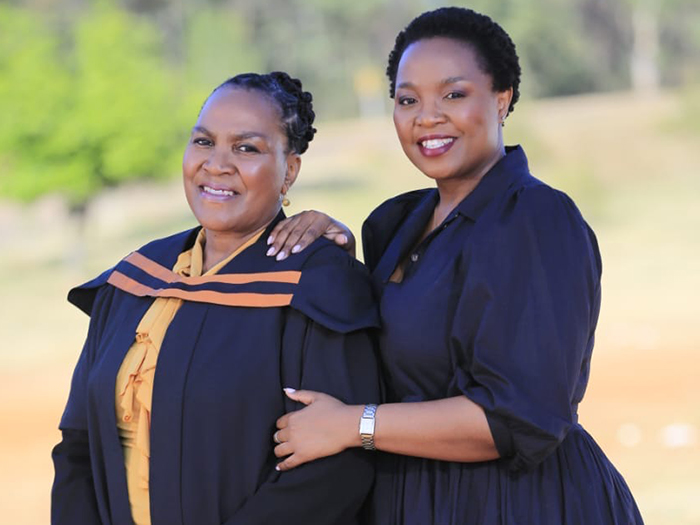We’re a global leader in premium drinks, the most exciting consumer products space.
The Baileys farm is steeped in family history – Joe and Michael represent the fourth generation of farmers since their great grandparents settled there in 1865. Under Joe and Michael’s leadership, as “custodians of nature and of natural history”, the farm is run on long-established principles of stewardship, sustainable farming practices and innovation.
A visit to the farm revealed not only the depth and breadth of Joe and Michael’s green efforts, but also the farm’s nucleus – a bevy of ‘Ladies’ (as the cows are lovingly called) responsible for the Irish cream in Baileys liqueur.
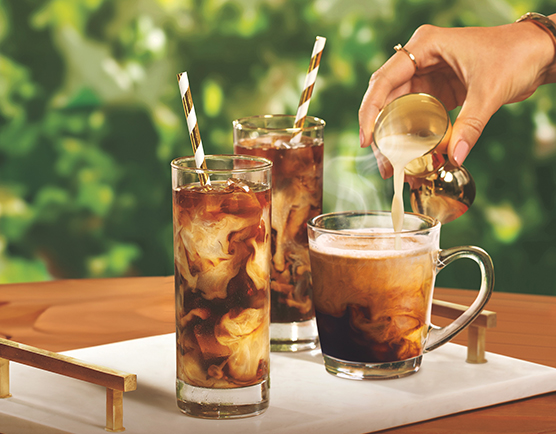
Next gen milking facility
During the Covid-19 pandemic, Joe and Michael, along with a ‘first division’ team of diary experts, undertook a ‘lockdown project’; designing and building a next generation milking facility. The result? A purpose-built stainless-steel carousel holding 46 cows at any one time, rotating five times per session, allowing Joe to milk 230 cows unassisted in just over one hour.
Animal behavioural science studies1, have illustrated the benefit that musical stimulus can have on cattle, particularly influencing the behavioural readiness of cows to access the milking compartments of an automatic milking system. The Ladies enjoy their own Spotify playlist whilst being milked. Favourites include Coldplay, Enya, Lady Gaga and The Cranberries. It’s like Glastonbury for cows – just with less mud.
This is a huge advancement in milking technology on the farm allowing the Ladies to be milked twice a day, every day (including Christmas), producing over 1.5 million litres of milk per year at around 7,000 litres per cow.
The milk collected on the carousel can only be stored briefly, as it is transported from the farm and incorporated into a bottle of Baileys within just 36 hours. This is “one of the advantages of farming in a small country”, Joe says.
Health-tracking wearables. For cows.
Each Lady wears a MooMonitor+ - think of it as a Fitbit designed specifically for dairy cows. Developed by Dairymaster, an Irish firm specialising in dairy technology solutions, they are primarily used to monitor cow behaviour, reproductive cycles, and overall health, helping Joe and Michael optimise herd management and increase productivity.
Milk quality is monitored too, with every batch tested for fat, protein, lactose, and – crucially - somatic cell count, a marker of cow stress.2 Baileys’ standards necessitate the acceptance of milk that has under 200,000 somatic cells per millilitre exclusively. Joe and Michael’s farm average just 114,000 – suggesting that these cows aren’t just healthy – they’re seemingly happy.
The power of good soil
The farm’s pastures are a carefully curated buffet, Joe and Michael have implemented a number of farm practices to maximise soil health. Each of the 140 hectares features four to five varieties of grass to provide seasonal and nutritional variety. Soil health is independently analysed biannually to understand nutrient levels and status, carbon exchange capacity and biodiversity. They then create and implement a strategy to nurture the pastures to maintain optimum levels in the soil in each.
Community is key
Alongside healthy, well-fed cows, community is a strong pillar of the farm. When it comes to implementing sustainably based farming practices Joe describes one of his goals as achieving as much as is practically possible in the shortest possible space of time. They are committed to working collaboratively with many partners including Baileys and their dairy Co Op, Tirlán to strengthen their impact. “It's not just for us”, Joe explains, “but to show the world that there is a way forward. We're all together in this. It's the ongoing education of our dairy farmers. It's the peer-to-peer learning. It's the industry support. It's everybody on the same bus trying to get to the same destination. That's why we will succeed”.
Tracking towards sustainability goals
Joe’s motto “yes we can” has allowed the farm to progress towards their ultimate goal of carbon neutrality.
- Reduction in carbon emissions: now at 0.88kg CO2/kgFPCM - outperforming the Industry Average of 97 kgCO2/kgFPCM.
- Ammonia: the farm has further seen ammonia emissions reduced through a 60% reduction in slurry spreading and 60% use of emissions free chemical fertilisers, tracking towards 100% use by 2026.
- Methane: emissions are continually being reduced through improved grass consumption, cutting edge breeding technology and new methane reducing natural feed additives.
- Solar energy: the farm is installing a 62KW solar system which will see a minimum of 75% of its power derived from renewable sources.
Joe and Michael take great pride in their contribution to Ireland’s sustainability efforts and the progress they have made towards their personal goals for the future of the farm. The Baileys farm is proof that environmental goals, good business practice and joyful indulgence can go hand in hand.
1 Lemcke, M.-C., Ebinghaus, A. and Knierim, U., 2021. Impact of music played in an automatic milking system on cows’ milk yield and behavior—A pilot study. Dairy, 2(1), pp.73–78. Uetake, K., Hurnik, J.F. and Johnson, L., 1997. Effect of music on voluntary approach of dairy cows to an automatic milking system. Applied Animal Behaviour Science, 53(3), pp.175–182.
2 Or from a sub clinical udder infection.



